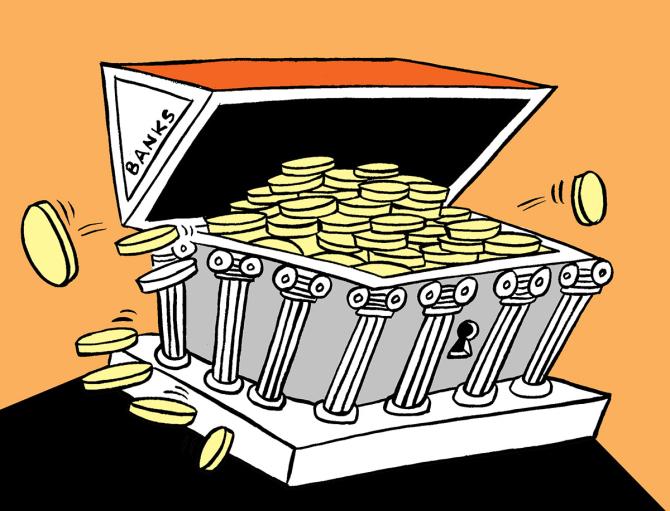The health of Indian banks continued to improve in 2021-22 with their balance sheet growing at double digits after a gap of seven years and their asset quality and capital position bettering, the Reserve Bank of India (RBI) said in its annual report on trend and progress of banking in India.

At the same time, the banking regulator flagged the issue of slippages from restructured accounts.
“Going forward, it is imperative that banks ensure due diligence and robust credit appraisal to limit credit risk,” the report said.
“If downside risks materialise, asset quality could be affected.
"Hence, slippages in restructured assets need to be monitored closely,” it said, adding that timely resolution of stressed assets was essential to prevent asset value depletion.
Surplus liquidity in the banking system has been falling in recent months.
Liquidity has even slipped into deficit on more than one occasion.
However, the RBI has assured liquidity support to the productive sectors.
The robust growth in banks’ balance sheet, particularly for public sector banks (PSBs), ensured that the latter still have the lion's share in the deposit and advances market.
According to the report, PSBs account for 62 per cent of the deposits of scheduled commercial banks, while on loans, they corner 58 per cent market share.
Credit growth of banks was at a 10-year high at the end September 2022, the report said.
Commenting on the profitability of commercial banks, the report said their return on equity (RoE) and return on assets (RoA) improved to levels last observed in 2014-15.
The asset quality of Indian banks continued to improve with gross non-performing assets (GNPAs) as a percentage of gross advances further falling in September 2022, to 5 per cent, as compared to 5.8 per cent in March 2022.
“This decrease was led by lower slippages as well as reduction in outstanding GNPAs through recoveries, upgradations and write-offs,” the report said.
In 2021-22, the reduction in NPAs was mainly contributed by written-off loans in the case of PSBs, while upgradation of loans was the primary driver for asset quality improvement for private banks.
The report observed that the capital adequacy ratio (CAR) has been increasing for the banking sector in the last few years.
At end-September 2022, the CAR of scheduled commercial banks stood at 16 per cent.
While rising interest rates could cause mark-to-market losses for banks, the report said data from select banks suggested at end-September 2022 that, ceteris paribus, banks would remain adequately capitalised even after making necessary provisions for MTM losses due to a rise in yield.
On off-balancesheet operations, the report said contingent liabilities’ growth of all SCBs crossed 23 per cent – the highest in 11 years – led by growth in forward exchange contracts, and acceptances and endorsements.
As a proportion of balance sheet size, contingent liabilities increased from 119 per cent in 2020-21 to 133 per cent in 2021-22.
“Foreign banks’ contingent liabilities are more than 10 times their balance sheet size and constitute about half of the banking system’s total off-balance sheet exposures.
"Their non-interest income, however, has not increased commensurately,” the report said.
The report also noted that, after declining for two consecutive years, new bank branches opened by commercial banks increased by 4.6 per cent during 2021-22.
The growth was led by new branches opened in Tier 4, Tier 5 and Tier 6 centres.
“Although the share of Tier 2 and Tier 3 centres in new branches declined in 2021- 22 from a year ago, more than half of the new branches opened during the year were in Tier 1 and Tier 3 centres,” the report said.











